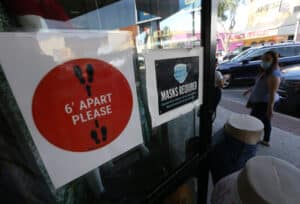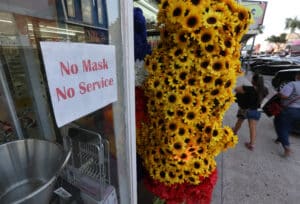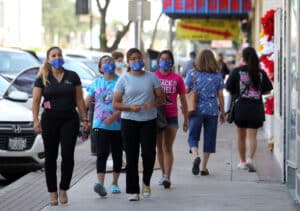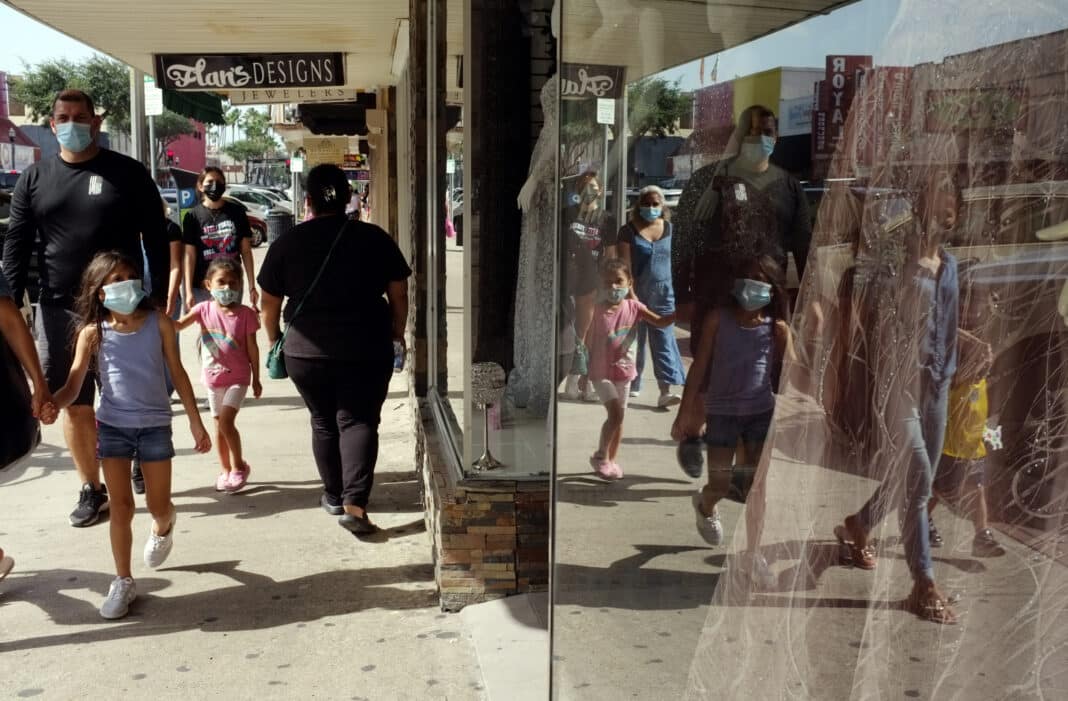The Rio Grande Valley is finding itself in a familiar situation. It’s July and, like this time last year, COVID-19 hospitalizations are on the rise.

Just as hospitalizations were reaching new lows, they were suddenly up again when, on Monday, they jumped from 52 to 93 patients, a nearly 78% jump within a 12-hour period, leading officials to become very concerned, according to Dr. Ivan Melendez, the Hidalgo County health authority.
“Our numbers, one week ago today, were 46 in the hospital, today it’s 102,” Melendez said, adding that the county was going days without reporting a single death due to COVID-related complications but now between one and three people are dying per day.
“A far cry from a year ago when we had 1,200 in the hospital and 50 to 75 people dying,” Melendez said. “But today, we’ve doubled in a week (and) we’ve confirmed what we already knew, that we have a Delta variant down here.”
The case of the Delta variant, believed to be the most transmissible, is in addition to the other variant cases the county previously confirmed such as the B.1.1.7., or U.K variant, the P.1, or Brazilian variant, and a California variant, B.1.427/B.1.429.
“Our numbers have doubled in a week, we’re approximately 11 days out of the Fourth of July, so we’re seeing the impact of people living recklessly,” Melendez said. “That should last another week or so when we see some of those numbers coming from the Fourth of July festivities and then those people that they infected, we should see those in the next couple of weeks.”

“I’m hoping that by the middle of or latter part of next week, the numbers will be less than 100 as today they’re over 100 which is a big milestone,” Melendez continued. “We hadn’t hit 100 in a couple of months”
As for why the numbers were increasing, Melendez said one of the reasons was because people were traveling a lot more, likely being infected elsewhere and bringing it back to the Valley.
Second, he said people were being more careless because they got vaccinated, perhaps thinking that they’re completely safe when they’re not.
And then lastly, Melendez said the most important reason is because of people who are not getting vaccinated at all.
As of Friday, about 61% of the entire Valley population has received at least one dose of the vaccine while 52% have been fully vaccinated, according to data from the Texas Department of State Health Services.
In Hidalgo County, that same data shows that 60% of the population have received at least one dose while 51% have been fully vaccinated.

But Melendez pointed out that those estimates are likely a lot lower than we think.
“We say 60% of the people in the Valley, or in Hidalgo County, are vaccinated, but are they really? Melendez said. “Let’s look at the population itself. Are we using the 850,000 total population of Hidalgo County that was (calculated) by the Census in 2010 or are we using the 1.2 million that’s probably going to be in 2020 which isn’t available yet?”
“Now what about 20% of those people that are not eligible for the vaccine because they’re not old enough? And so you add another couple hundred thousand people there,” Melendez continued. “And then what about those people that live in the dark? Those people that are (undocumented) and they don’t want to come out for Census counts?”
Turning to the people who are admitted into hospitals because of severe COVID-19 symptoms, Melendez said more than 90% of those patients hadn’t been vaccinated.
“And everyone who’s died, that I’m aware of, has been an unvaccinated person,” he said. “And so from Dec. 26 when we started vaccinating until today, the only constant that changed that made our numbers go down so dramatically was vaccinations because human behavior didn’t really change.”
He stressed that the region’s success in driving down hospitalizations was solely due to vaccinations, but now with the presence of variants, he grew worried.
“We’re all very worried,” Melendez said. “The numbers are increasing and I fear that we may have squandered our opportunity to eradicate it completely like Smallpox and I think this is going to be around for quite some time to come.”

So what can health officials do to encourage more people to get vaccinated?
“As far as health officials, we are actually working with many of the organizations, school districts, churches, we’re working with a lot of the community advocacy groups,” said Eddie Olivarez, the chief administrative officer for the Hidalgo County Health and Human Services Department. “We’re really working hard on trying to get more people get vaccinated, we’re working through all our partnerships that we have.”
Olivarez said that there was a vaccination gap among people between 18 and 30 years old who have so far refused to get the vaccine.
Daily COVID-19 reports provided by the counties do indicate that, these days, it is affecting younger people more than most.
While the counties do not provide the ages of those hospitalized, information provided by Hidalgo and Cameron County show that the majority of people testing positive, this month alone, are in their 30s or younger.
Getting people to take the situation seriously enough to finally get vaccinated, Melendez said, would take reminding them of how much tragedy it caused.
“You would think, right, that having that personal drama would impact you to change but not even that,” he said. “I think that the number one reason why human beings have been able to continue working hard and sacrificing is because as a species, homo sapiens, we’ve learned how to forget that one day we’re going to die.”
“So I think that people have forgotten already the pain that they went through,” Melendez continued.
“So what can we do? People like you and people like me, we need to never lose hope in our community and even though we’re frustrated, we can never say people are not going change because we can’t throw in the towel, right?” he said. “So what do we do? We remind people of what we’ve been through.





